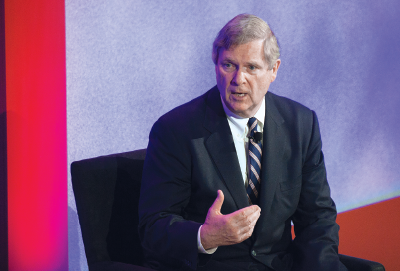Overcoming Opioid Abuse in Rural U.S. Requires Varied Approach
Abstract
Agriculture Secretary Tom Vilsack is tapped to lead a new interagency effort to address the misuse of prescription opioids and heroin in rural America.
Opioid abuse is growing in urban and rural communities across the United States.
According to a report released in February by the Maine Rural Health Research Center that analyzed data from the National Survey of Drug Use and Health, 4.8 percent of urban U.S. residents over the age of 12 used opioids nonmedically in the past year, slightly more than the 4.4 percent in rural areas. However, as noted in the report, rural opioid users may face several challenges that make it difficult for them to access care.
For instance, the survey found that rates of past-year opioid use among rural youth were twice as high as the overall prevalence. About 8 percent of rural youth aged 12 to 19 and 9.5 percent of those aged 20 to 29 had used opioids in the previous year.
Other rural subpopulations with higher past-year use rates included those who were “unmarried, with low educational attainment, no insurance coverage, and low income,” Jennifer Lenardson, M.H.S., and colleagues wrote. “These characteristics could make it more difficult for a rural patient to seek and complete substance abuse treatment given the difficulties inherent in accessing specialized treatment from a remote location.”
“Here in South Carolina, the average income in rural areas is $10,000 less than in urban areas, and people generally have less education,” said addictions specialist Kathleen Brady, M.D., Ph.D., a professor of psychiatry and behavioral sciences at the Medical University of South Carolina, in an interview with Psychiatric News.

Opioid addiction is costly in terms of health care services, lost productivity, and law enforcement, says Secretary of Agriculture Tom Vilsack.
“More people work in manual labor jobs that can lead to injury and pain and the use of opiate prescription drugs,” said Brady, who was not involved with the Maine study. “The problem is made worse because there are fewer physicians and fewer treatment options in rural areas.”
In January, President Barack Obama named Secretary of Agriculture Tom Vilsack to lead an interagency effort focused on addressing the opioid epidemic, which resulted in nearly 19,000 overdose deaths in 2014. Vilsack has chaired the White House Rural Council since 2011, giving him firsthand experience addressing challenges in rural America.
At a National League of Cities meeting in Washington, D.C., on March 8, Vilsack outlined the federal government’s plans to address the opioid epidemic.
“For a start, we need to do a better job of training doctors about prescribing opioids,” Vilsack said. In October 2015, the president announced a commitment by more than 40 medical groups to training more than 540,000 providers on appropriate opioid prescribing over the next two years.
“We also want to focus resources on expanding medication-assisted treatment programs,” he said.
Buprenorphine can be used in office-based practices to transition people off opiates, but doctors need additional certification to prescribe it, and not many rural or primary care practitioners have that certification, said Brady. Expanding the number of clinicians certified to prescribe buprenorphine in rural areas could increase access to those seeking treatment for opioid use disorders.
The USDA offers grants for expanding broadband access and telemedicine in rural areas, and the administration is looking to triple the funding for those grants, said Vilsack.
Overall, the Obama administration’s Fiscal 2017 budget will include $920 million in new funding over two years for states to expand access to medication-assisted treatment for opioid use disorders.
Another $50 million will be earmarked for the National Health Service Corps to support 700 substance use disorder treatment providers in areas of greatest need, and $30 million has been allotted for evaluating the effectiveness of medication-assisted treatment programs.
The FDA is also working with drug companies to reformulate medications so that they present less potential for abuse, addiction, or overdose (Psychiatric News, March 18).
Vilsack praised the reformulation of naloxone into a nasal spray so that it can be easily used to rescue overdose victims and noted that federal grants were available to make the medication available to police, emergency medical technicians, and other first responders. He also called for a “general prescription” that would allow anyone—especially family members of opioid users—to have naloxone available for emergencies.
Vilsack’s task force is working closely with the 49 states that have prescription drug monitoring laws (Missouri is the one exception) to create interstate data-sharing systems that would minimize doctor-shopping, especially in regions where people with opioid use disorders can easily move back and forth across state lines.
Vilsack called on political leaders at every level to step up in the campaign against the ravages of opioid abuse.
“We need to encourage people to seek support and then do everything we can to make sure that the resources, the staff, and the medications are all available when the time is right for recovery and that recovery is sustained,” he concluded. ■



